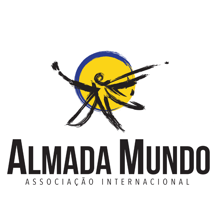Lisbon (Portugal)
ErasmusPlus-InServiceTraining
Pre-Registration
Would you like to participate in this course next school year 2021-2022? Please make a pre-registration so we can keep you informed about this course.
Final Registration
You want to confirm your participation for this course in the schoolyear 2021-2022?
Dates can be subject to change and are only final after official confirmation by the course provider.
CONTENT
It is often difficult to integrate the personal, cultural or historic background of the student and his/her family into school life and learning process. Scientific research proved that the student’s motivation is linked to his/her learning autonomy, competences and involvement (Ryan, Deci, Vansteenkiste).
Involvement is a double and active process. On the one hand the student has to be interested in what school life offers, but on the other hand the school must invest in a safe living and learning context where the student can express and develop his/her personality.
The concept of a community school museum allows the student the possibility to introduce his/her personal story into school life. By building a community school museum, students can track back the history of the local community and/or family and link it to the school.


A second advantage of the use of a community school museum is the enhancement of the social cohesion at school and the empowerment of the student. It allows to empathize with the history and evolution that people had to make in the past, to arrive at present day’s situation.
The method is especially used where language knowledge is a barrier. The community school museum helps language poor or non-native students to bridge the gap between their personal background and the average school situation.
Furthermore, the community school museum can help to overcome tensions between groups of students and understand how enemy images can develop. The method was successfully used in areas that had suffered from war, civil war or long periods of instability, to create a renewed feeling of belonging together.
This course is the result of an strategic Erasmus partnership in which 9 partners collaborated during 2 years.
GOALS
– Gaining insight in the use of a community school museum;
– Being able to use the concept of community school museum to enhance the social cohesion and intercultural dialogue at school;
– Being able to use the concept of community school museum to include the personal, familial or cultural history of the students into the school’s education context.
PRACTICALITIES
PORTUGAL – LISBON SOUTH BANK
The course is organized in the conference room of AlmadaMundo located at the South Bank of the river Tejo in Lisbon. (12 km from Lisbon airport). The participants are free to stay in a hotel of their own choice.
There is very easy access from the airport. Public transport and taxis provide fast connection from and to Lisbon centre.
COURSE FEE
– We offer a flexible cost structure, allowing you to select the package that fits best your personal or school situation.
– For a detailed explanation, have a look at our ‘Cost Structure‘.
FUNDING
– You can request an Erasmus Plus grant from your national agency which will cover almost all costs of this course.
– We can guide you through the process of funding and application. To do so, you need the make a pre-registration.
– After pre-registration, we’ll contact you by mail and provide the application help.
TAXI FROM AIRPORT TO HOTEL
– There is a taxi service at the airport that can drive you to the hotel.
– It’s particularly difficult to leave Lisbon between 16:30 and 19:00 h and to enter Lisbon between 08:30 and 10:30 h.
METRO / AEROBUS , FERRY AND TAXI
You can take the metro located at exit of the arrival hall of the airport and leave the metro at the terminus station Cais do Sodré.
– The Aerobus is another good way to travel from and to the airport. The Aerobus provides a connection between the airport and Cais do Sodré.
– At the station of Cais do Sodre, you can take a ticket for the ferry boat to Cacilhas (south bank of River Tejo). During working hours, there is a crossing every 15 minutes. The ferry takes 12 minutes to arrive on the other side of the river.
– At Cacilhas you can take a taxi or tram for the remaining 5 km.
RENTAL CAR
– A rental car is not so expensive. Sharing a rental car with 3 other people for all transport during the course, can be cheaper than relying on a taxi.
– The airport is connected directly to the hotel by the Ring of Lisbon and the North-South Connection (Eixo Norte – Sul).
– Crossing the bridge, you have a marvellous view on Lisbon, the estuary and both banks of the River Tejo.
– Bring or rent a GPS.
– Check the prices of rental cars on the Internet.

